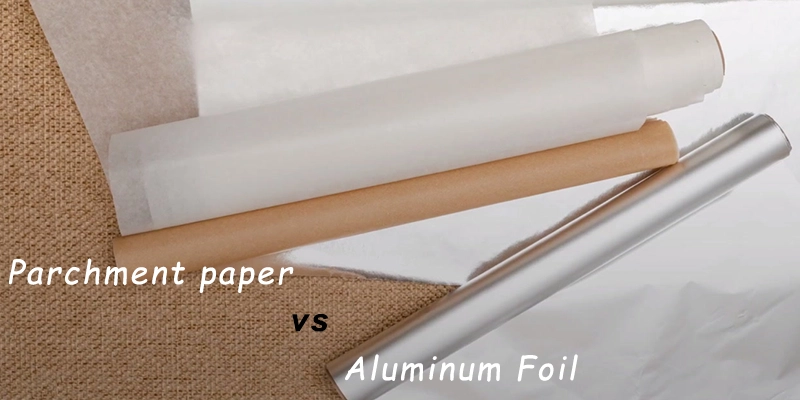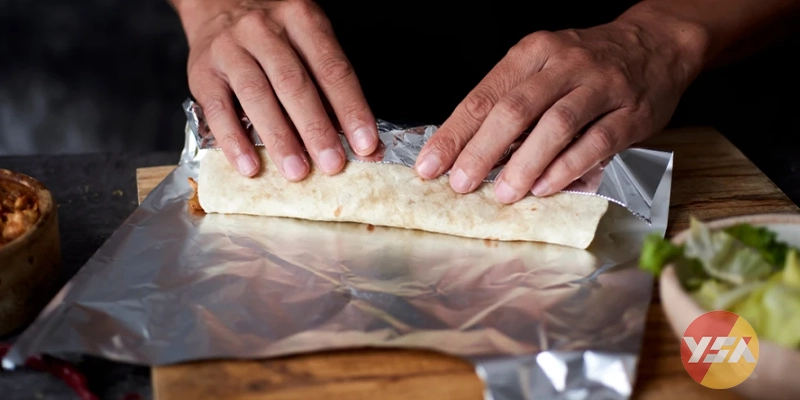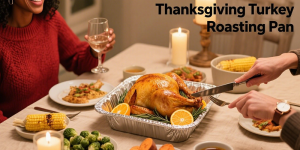When it comes to cooking, baking, and food storage, parchment paper and aluminum foil are two of the most commonly used kitchen materials. But are they interchangeable? Does one work better for certain tasks than the other?

As an aluminum foil manufacturer, we’ll compare parchment paper vs. aluminum foil, discussing their key differences, benefits, drawbacks, and best applications.
What Is Parchment Paper
Parchment paper, also known as baking paper, is a cellulose-based paper that has been treated with a silicone coating to make it non-stick, heat-resistant, and grease-proof. It comes in bleached (white) and unbleached (brown) varieties. Some features of parchment paper are as follows:
- Non-stick surface—Prevents food from sticking, ideal for baking cookies, pastries, and bread.
- Heat resistance—Typically safe up to 420–450°F (215–230°C).
- No greasing required—eliminates the need for extra butter or oil.
- Microwave-safe—can be used for reheating food.
- Compostable and biodegradable—an eco-friendly option compared to aluminum foil.
Best Uses For Parchment Paper
- Baking cookies, cakes, and pastries
- Lining cake pans and bread loaf tins.
- Making pastry bags for decorating.
- Steaming fish or veggies.
- Microwave reheating.
What Is Aluminum Foil
Aluminum foil (tin foil) is a thin, flexible sheet made from rolled aluminum metal. It’s highly conductive, durable, and impermeable to light, moisture, and odors. Common features include:
- Superior heat conduction—distributes heat evenly, great for grilling and roasting.
- High heat resistance—can withstand temperatures up to 1,220°F (660°C).
- Barrier against moisture and air—preserves freshness in food storage.
- Reusable and recyclable—can be cleaned and repurposed if not too damaged.
- Versatile shaping—easily molded around food or containers.
Best Uses For Aluminum Foil
- Grilling & barbecuing.
- Roasting meats.
- Covering dishes to keep food warm or prevent drying.
- Freezing food.
Parchment Paper vs. Aluminum Foil
| Features | Parchment Paper | Aluminum Foil |
| Material | Silicone-coated paper | Rolled aluminum |
| Non Stick? | Yes | No(unless greased) |
| Heat Resistance | 420–450°F (215–230°C) | Up to 1,220°F (660°C) |
| Best for Baking? | Yes | No (unless greased) |
| Best for Grilling? | No(can burn) | Yes (safe) |
| Environmental Impact | Biodegradable | Recyclable but energy-intensive to produce |
| Cost | More expensive per sheet | Cheaper per square foot |
When to Use Parchment Paper vs. Aluminum Foil

Let’s break down the best scenarios for parchment paper and aluminum foil.
When to Use Parchment Paper
- Baking Delicate Sweets
- Cookies, macarons, and meringues.
- Brownies and blondies.
- Sticky desserts like caramel or toffee.
- Roasting Vegetables
- Creates crispy textures without oil overload.
- Safe for acidic veggies (tomatoes, citrus)—no metallic taste.
- Lining Cake Pans
- Ensures clean release for layered cakes.
- Simplifies cleanup for sticky batters (e.g., honey cakes).
- En Papillote Cooking
- Perfect for steaming fish/vegetables in parchment packets.
- Locks in moisture without leaching flavors.
- Preventing Freezer Burn
- Layer between raw meat patties or baked goods.
- Short-term freezer storage (up to 1 month).
When to Use Aluminum Foil
- High-Heat Cooking
- Broiling meats or veggies (withstands up to 1,220°F/660°C)
- Grilling fish, shrimp, or veggies.
- Wrapping for Moisture Retention
- Oven-roasted turkey or chicken.
- Baked potatoes or corn on the cob.
- Crispy Edges
- Line baking sheets for roasted potatoes or bacon.
Crumple foil under pizza crust for extra crunch.
- Line baking sheets for roasted potatoes or bacon.
- Food Storage & Transport
- Long-term freezer storage (prevents freezer burn for 6–12 months).
- Wrap sandwiches or leftovers.
- Protecting Cookware
- Line messy casserole dishes (e.g., cheesy bakes).
- Cover pie crust edges to prevent burning.
Parchment Paper or Aluminum Foil
The choice between parchment paper and aluminum foil isn’t about picking a winner—it’s about leveraging their unique strengths. Parchment paper reigns supreme for non-stick baking, delicate desserts, and acidic dishes, ensuring mess-free results and flavor purity. Aluminum foil, with its unmatched heat resistance and versatility, dominates grilling, broiling, and long-term food storage.



